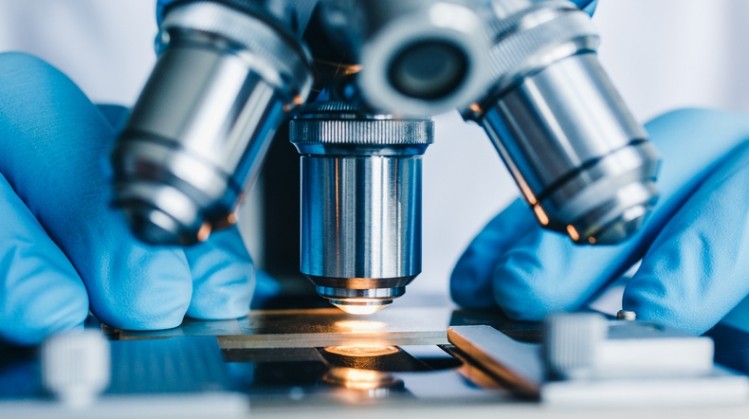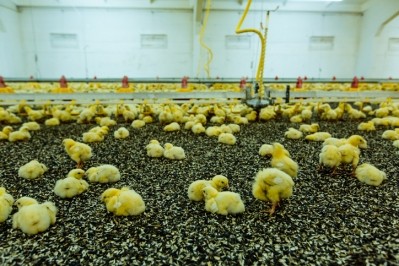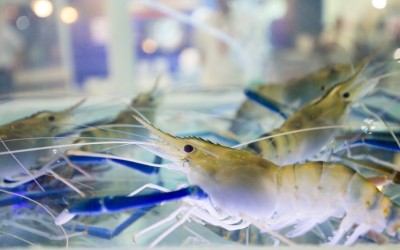reports from IPPE
Gut health, young animal nutrition and Agtech on Cargill's radar

We sat down with Tom Taylor, managing director with Cargill Premix and Nutrition, at the International Production and Processing Expo (IPPE) in Atlanta to hear more about the work that the company has been doing with animal nutrition and to get a sense from him of where the industry is going.
Some of the areas where Cargill has invested in recent years include gut health, early animal nutrition and labor saving technology, he said. Supporting trade also remains a concern.
On the nutritional side, the challenge is to address gut health and animal development while the use of antibiotics, drugs and other products during production is lowered, he said.
“We’ve been in the animal nutrition business for 120 years – we have compound feed, we have vitamin [and] trace mineral packs or premixes, we have aqua feed and what we’ve done more recently is create a group around health and technology,” Taylor said. “We believe this is an important investment that can be used by all our animal nutrition groups. Health and technology is going to become more and more important since as you impact gut health, you impact disease prevention.”
Focus on early animal nutrition
Cargill has established young animal nutrition as a strategic theme, said Taylor.
“We know if we can start these animals off better, quicker, it will lead to a much more sustainable and a much more productive life cycle, so young animal nutrition is one of the areas where we’ll focus to help deliver performance, sustainability and well-being,” he added.
In addition to providing the right nutrition, a focus on young animals has to involve the entire system, including looking at processing and delivery, he said.
Part of the work also starts with nutrition for the parent animal, he said. “What are we doing to prepare that animal for reproduction? And then, how do you provide just the right nutrition, processed in just the right way, [and] delivered at just the right time … so that when a newborn arrives they have the best chance of thriving?” he added.
Antibiotic replacement, gut health and sustainable production
Starting with the consumer, both in the US and globally, there is an increasing interest in animal production that does not rely on the use of antibiotics, said Taylor. “Consumers really drive the supply chain,” he added.
As a global company, it can rely on its experience elsewhere to deal with new regulations around antibiotic use in additional markets, he said.
“We’ll continue to get more and more constraints around these,” he said of the use of products like in-feed antibiotics. “It really provides the opportunity for us to continue to innovate, invest and research.”
Some of the investments Cargill has made in recent years including the acquisition of Diamond V were part of that consideration, he said. “It’s really around how do we work with an animal’s natural biology, to improve their overall health and well-being?” he added.
“A healthier animal is much more efficient at producing meat, milk or eggs,” Taylor said. “They’re able to convert nutrients to growth and output versus fighting disease or fighting poor health, so those are some of the things that we look at.”
Developing alternative products has been a “challenge and also an opportunity,” he said. “We have invested a significant amount of time and money into innovation and research around gut health and that really leads to improved well-being,”
The focus on supporting gut health also has become part of the discussion on sustainability in animal production, he said. “You look at how you improve gut health, and how that makes animals more efficient, more productive as well as creating a sustainable environment,” he added.
Additionally, the company is in the process of opening a non-medicated, premix and trace mineral production facility in Ohio to address the ongoing interest in limiting the use of antibiotics in production, said Taylor.
“Those are investments that really create a foundation for the future as we move forward on health and technology,” he said. “The environment forces us to branch out far beyond just nutrients and ingredients and a product.”
Investing in production technology
Agtech is also of interest to the agribusiness giant. Last year, Cargill invested in the dairy-focused digital technology company, Cainthus, and the Latin American swine technology firm, Agriness.
“One question is – how do you connect Cainthus with Agriness? And how do you help farmers make proactive decisions to improve their operations?” he said.
Cargill is already working to adapt some of the facial and movement technology Cainthus developed to monitor dairy cows for use in swine production, he said.
“All that is really translating into – how do we become more productive?” he said. “How do we become more sustainable? How do we improve health? And, ultimately, how do you become more profitable? All those things have to work together.”
The company also launched the digital aquaculture technology platform, iQuatic, currently focused on shrimp production, said Taylor. That technology will also be use in the production of other livestock species.
That technology is used to evaluate the environment as well as animal behavior in order to provide predictions on feed needs and other inputs, he said. "It helps the shrimp grow better, and it’s actually better for the environment since it reduces waste.”
In the last three years, Cargill Animal Nutrition has invested $150m in innovation and R&D globally, he said.
The goal of that effort is to provide support for producers as they seek to “improve their production feed efficiency, navigate evolving market expectations and build more sustainable operations,” he added.
“How do you couple that with nutrition, which we’ll continue to invest in, but how do you couple that with things like the Cainthus, things like Delacon, things like Diamond V, things like Agriness? And how do you begin to link all these systems to help our customers be more successful?” he asked.















